ロボットの体を動かすとはどういうことか?
私たち人間は何も考えなくても自然に体を動かせますが、ロボットの体を動かすとはどういうことか考えてみましょう。
何かを目で見つけて、それに興味がわき、もっとよく見ようと思い、近づいていく場合を考えてみましょう。
(1)目で何かを見てそれが何か認識する
(2)それに興味がわきもっとよく見たいと思う
(3)そのためにそれに近づこうと思う
(4)そのために体を動かして近づく
(5)近くでよく見てそれについて良く知る
といった流れだと思います。人間はそれをほとんど意識しないでやっていると思いますが、特に(4)については全く意識せずに行っていると思います。(1)(2)(3)(5)についてもあまり意識して行動していないでしょうが、振り返ればどう感じていたかを思い出すことはできると思います。ですが、(4)については全く意識していないと思います。右足を前に出して、バランスをとって左足を出してなんて考えてもいないし、何をしたか思い出すこともできないと思います。私は脳の専門家ではありませんが、そこに明らかな行動パターンの違いがあると思います。
その差が何からきているかを考えると、おそらく(4)に関しては運動神経を司る脳幹が働いているのだと思います。つまり、大脳などの脳の中枢部分が働くのではなく、脳幹が運動神経を制御して動かしているのだと考えられます。だから脳の中枢部分が行う(1)(2)(3)(5)の動作は思い出せるけど、(4)は何をしたか思い出せないのでしょう。
ここで思い出してほしいのがセマンティックスの考え方です。脳の中枢部分は脳幹に対して抽象的なコマンドを発しているのだと考えます。つまり ”前方に2m前進” とかの抽象的な命令を発し、脳幹がそれに従って体を動かしているのでしょう。
この抽象的なコマンドをロボットで実行しようと思うとどうなるでしょう?ロボットといっても形や大きさが異なりますから、あるロボットでは2m進むのに3歩かもしれませんが別のロボットでは6歩かもしれないし、ましてや車輪型のロボットならタイヤで1回転で着いてしまうかもしれません。要するに、同じコマンドを受け取っても、ロボットごとにやるべきことが違ってくるのです。逆に言うと、各ロボットでやることが違うけど、同じコマンドで制御できるとも言えます。
こういった抽象的なコマンドって便利だと思いませんか?ロボットの形や大きさが異なっても同じような感じでロボットを動作させることができます。さらにいうなら、”笑え”とか、”こんにちは” とか ”びっくり” とか ”しゃがめ” とかもっと抽象的なコマンドを定義することも出来ます。
だから、ロボットの制御方法を考えるときに一番大事なのは、
(A)脳の中枢部分と脳幹(運動神経を司る部分)を分けて構築する
(B)その間を繋ぐためにセマンティックスの考えを使い抽象的なコマンドにする
脳の中枢部分は行動のロジックを考える部分で、それで実際に行動させるときには脳幹が動作制御することで、形や大きさが異なるロボットでも同じように(全く同じではないけれど)動作させることができます。昔のAIBOではこの方法でいろいろな形のロボットを同じように動かしていました。
What does it mean to move a robot’s body?
We humans can move our bodies naturally without thinking, but let us consider what it means to move a robot’s body.
Consider the case where you see something with your eyes, become interested in it, decide to look at it more closely, and move closer.
(1) You see something with your eyes and recognize what it is
(2) You become interested in it and want to look at it more closely
(3) Want to get closer to it
(4) Move the body to get closer to it
(5) Look at it closely and get to know it better
I think this is the process. I think people do it mostly without being aware of it, especially (4). I don’t think we do (1), (2), (3), and (5) very consciously, but we can recall how we felt about the process when we look back. However, I don’t think you are aware of (4) at all. I don’t think you do conciously putting your right foot forward, balancing and putting your left foot forward, and you can not recall what you did. I am not a brain expert, but I think there is an obvious difference in behavior patterns there.
Considering what the difference is derived from, I think that the brainstem, which controls the motor nerves, is probably at work with respect to (4). In other words, it is thought that the brainstem controls and moves the motor nerves, rather than the cerebrum and other central parts of the brain. That is why you can remember the actions (1), (2), (3), and (5) performed by the central part of the brain, but you cannot remember what you did for (4).
Here I would like to remind you of the idea of Semantics. We believe that the central part of the brain issues abstract commands to the brainstem. In other words, it would issue an abstract command such as “move forward 2 meters,” and the brainstem would move the body accordingly.
What happens when you try to execute this abstract command with a robot? Robots come in different shapes and sizes, so it might take one robot 3 steps to go 2 meters, while another robot might take 6 steps, or even a wheeled robot might get there with a single rotation of its tires. In short, even if they receive the same command, each robot has different things to do. Conversely, it can be said that each robot does different things, but can be controlled by the same command.
Don’t you think these abstract commands are useful? They can make a robot behave in the same way, even if the shape and size of the robot are different. We can even define more abstract commands such as “smile,” “hello,” “surprised,” “crouch,” and so on. And more abstract commands can also be defined.
So, the most important thing to consider when thinking about how to control a robot is,
(A) Separate the central part of the brain from the brainstem (the part that controls the motor nerves).
(B) To connect them, we use the idea of Semantics to make abstract commands.
The central part of the brain is the part that thinks about the logic of actions, and the brainstem controls the actual actions, so that robots of different shapes and sizes can operate in the same way (though not exactly the same motion). In the old AIBO, this method was used to move robots of various shapes in the same way.
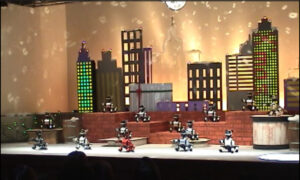
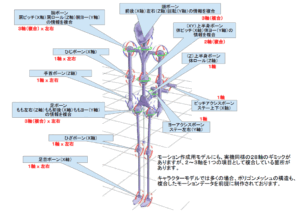

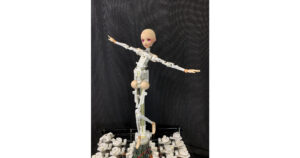
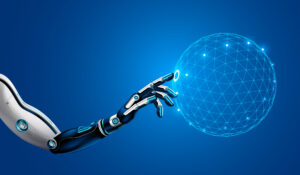
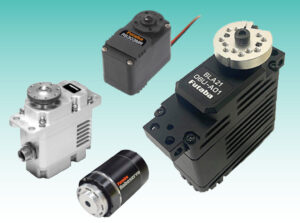
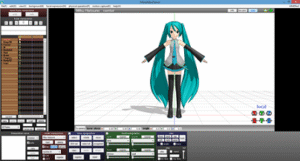
コメント
コメント一覧 (2件)
Thank you for the auspicious writeup. It in fact was a amusement account it. Look advanced to far added agreeable from you! By the way, how can we communicate?
The very crux of your writing while sounding agreeable at first, did not sit properly with me after some time. Someplace throughout the paragraphs you were able to make me a believer unfortunately just for a while. I still have got a problem with your leaps in logic and one might do nicely to help fill in those gaps. In the event you can accomplish that, I could undoubtedly end up being impressed.